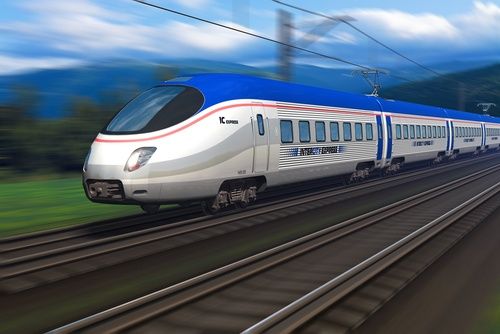(2 pm. – promoted by ek hornbeck)
 I’m flat out, finishing one and working on another of my two biggest projects for the end of the year ~ the one that I’m finishing has a drop dead deadline of Monday, but I’m hoping to finish it and send it off sometime late tonight ~ and grading and all of the other five-times-a-year term-end rush of work, so I don’t have time to sit down for my normal most-of-Sunday-afternoon to compose a regular Sunday Train.
I’m flat out, finishing one and working on another of my two biggest projects for the end of the year ~ the one that I’m finishing has a drop dead deadline of Monday, but I’m hoping to finish it and send it off sometime late tonight ~ and grading and all of the other five-times-a-year term-end rush of work, so I don’t have time to sit down for my normal most-of-Sunday-afternoon to compose a regular Sunday Train.
However, fear not. Instead of my regular Sunday Train, I am going to present a draft of a contribution I am working on for a longer white paper that involves the Steel Interstate investment that our country needs to be making in electrified, long-haul freight transport. Longer time readers of the Sunday Train may expect to see familiar themes covered in this draft.
If you have any comments, constructive criticism (or even, I guess, non-constructive criticism) I would be happy to hear it. And, of course, you may always raise any issue in Sustainable Energy and Transport that may come to your mind.
Solution: 21st Century Sustainable Rail
Description of 21st Century Sustainable Rail
 Sustainable Transportation for the challenges of the 21st Century requires us to shift our vision away from One-Size-Fits-All transport systems, which never in fact fit all, and typically fit many badly. We must focus on transport systems that are both effective and resource-efficient solutions at serving their transport task, while working well with the other components of the transport system.
Sustainable Transportation for the challenges of the 21st Century requires us to shift our vision away from One-Size-Fits-All transport systems, which never in fact fit all, and typically fit many badly. We must focus on transport systems that are both effective and resource-efficient solutions at serving their transport task, while working well with the other components of the transport system.
Our present transport system relies heavily on refining petroleum into liquid fuels that offer excellent energy density and convenience for decentralized, individual passenger and freight transportation. However, for many specific transport tasks, such as transport of large numbers of people along a common transport corridor or hauling a large quantity of freight over a thousand miles or more, these systems offer substantially lower energy efficiency than is available from existing alternatives, while requiring substantially higher expenditures for right of way maintenance. Further, as discussed above, much of the nation’s most abundant sustainable, renewable energy resources are tapped in the form of electricity, which is most efficiently used in transport by driving electric motors.
For corridors with a high frequency of trips, direct supply of electricity along the right of way is the most efficient means of powering transport. When it is practicable to provide the transport using steel wheels running on steel rails, this offers lower rolling resistance and therefore greater energy efficiency per trip, as well as greater durability than asphalt right of way under heavy use. At higher speeds, vehicles operating in connected trains also experience lower air resistance per vehicles than those operating as independent vehicles.
By contrast, public (typically asphalt) rights of way can accommodate a wider range of vehicles, including liquid fuelled cars and trucks, battery-electric cars and trucks, electric trolley-buses with investment in overhead power supply, and lighter weight, lower speed personal vehicles such as bicycles, electric bicycles and neighborhood electric vehicles. There are a wide range of transport tasks that do not generate a sufficient number of trips per corridor to justify the up-front cost of installing the track and signaling system, and are more effectively served by independent vehicles operating on a public right of way.
A sustainable transport system for the 21st Century will be therefore include a range of modes of transport powered by a range of sustainably generated energy sources. The backbone of the system will in many cases rely on electrically power rail transport with the electricity delivered directly to the vehicle operating along the corridor. These trunk transportation corridors will connect with feeder systems, including trains operating on battery power or sustainable liquid fuel and vehicles operating independently on the public right of way.
A vision for sustainable freight rail
 The backbone of a sustainable system for national freight transport will be a system of electrified rail corridors, which will support both rapid freight transport at 90mph-125mph and heavy freight transport at 60mph-80mph. Both container freight and heavy bulk freight will extend beyond the electrified freight backbone, hauled efficiently by locomotives powered by sustainably generated biofuels or electrofuels.
The backbone of a sustainable system for national freight transport will be a system of electrified rail corridors, which will support both rapid freight transport at 90mph-125mph and heavy freight transport at 60mph-80mph. Both container freight and heavy bulk freight will extend beyond the electrified freight backbone, hauled efficiently by locomotives powered by sustainably generated biofuels or electrofuels.
While an increased number of enterprises will choose to locate where they can connect directly to a freight rail corridor, many enterprises will continue to rely on truck loading docks, with a large number of hybrid powered trucks hauling freight loads both for closer trips in the region and also between the loading dock and the railhead. Due to cost, speed to market and delivery reliability, most long-haul freight shipments will be carried over the long haul electric freight rail for the majority of their journey.
The long-haul electrified rail corridors will also contribute to providing more renewable, sustainable power than they consume by hosting long-distance Electricity Superhighways. As discussed above, these electric power corridors allow greater reliance on abundant renewable power sources such as solar and windpower which experience both predictable and unpredictable intermittency at the local level, but which offer a substantially more reliable and predictable supply when multiple distinct producing regions are connected together.
A vision for sustainable passenger rail
 At the local level, transport corridors with the highest levels of prospective ridership will be served by mass transit, dominated by electric heavy rail, including regional corridors at grade and high capacity electric elevated and subway trains. At a lower level of prospective ridership, transport service will be dominated by the range of light rail modes of transport, including Light Rail Transit, Streetcars in both dedicated corridors and corridors shared with express buses, and Rapid Streetcars extending beyond their on-street core onto conventional rail corridors. At a still lower level of prospective ridership, transport service will be dominated by common carrier vehicles such as hybrid battery-electric trolleybuses, recharging batteries from overhead power supply while at the bus stop and drawing power to accelerate away and then operating off of the battery while running between the sections of the route with overhead power.
At the local level, transport corridors with the highest levels of prospective ridership will be served by mass transit, dominated by electric heavy rail, including regional corridors at grade and high capacity electric elevated and subway trains. At a lower level of prospective ridership, transport service will be dominated by the range of light rail modes of transport, including Light Rail Transit, Streetcars in both dedicated corridors and corridors shared with express buses, and Rapid Streetcars extending beyond their on-street core onto conventional rail corridors. At a still lower level of prospective ridership, transport service will be dominated by common carrier vehicles such as hybrid battery-electric trolleybuses, recharging batteries from overhead power supply while at the bus stop and drawing power to accelerate away and then operating off of the battery while running between the sections of the route with overhead power.
Access to residences and destinations that are not located on the local high ridership routes will be provided by a mix of sustainably powered conventional buses, electric and hybrid-electric private cars, share cars, and for those whose longer distance transport needs are effectively met by the high ridership route network, lighter weight, less expensive personal transport such as bicycles, electric bicycles and neighborhood electric vehicles.
For intercity transport, the longest distance trips will be taken primarily by air. With an increase in the quality, variety and frequency of regional common carrier transport, many of these will include a rail journey at one or both ends of the trip. Intercity trips between large population centers 200miles to 500miles apart will be dominated by some form of electric High Speed Rail technology. Trips of 100miles to 300miles between medium sized cities, and to or from large urban centers and medium size cities will be dominated by electric Rapid Passenger Rail technology operating at 90mph – 110mph – 125mph.
Intercity Rapid Passenger Rail services will also operate on the backbone electric Rapid Freight Rail system, where 110mph services can operate over rail paths optimized to ensure high reliability, quick time to market freight trains with much greater reliability and per-mile operating costs than today’s long-distance Amtrak trains. The same Positive Train Control that allows maximizing capacity of the Rapid Freight Corridors and flexibility of the cargoes that they can safely handle will ensure that Rapid Passenger Trains can inter-operate safely and efficiently on these backbone freight corridors.
The appeal of single seat travel will also see Intercity Rapid Passenger onto some conventional rail corridors, but much intercity transport that is not provides by High Speed and Rapid Passenger Rail will be provided by high quality regional buses, share cars, and private cars, all sustainably powered by some mix of battery-electric, sustainable biofuel, and/or sustainable electrofuel energy sources. As trains can add a station stop with much greater efficiency than planes can add an airport stop, the connections between these intercity modes of transport and the rail networks will be far more convenient than is the case with today’s airports.
Conclusions
 This is the point where I say that rather looking for some overarching conclusion, I now open the floor to the comments of those reading. That holds even more today, where this is a draft, incomplete section of what is to be a longer white paper, so that as the first section of multi-part chapter in a larger report, it cannot end in any grand finale.
This is the point where I say that rather looking for some overarching conclusion, I now open the floor to the comments of those reading. That holds even more today, where this is a draft, incomplete section of what is to be a longer white paper, so that as the first section of multi-part chapter in a larger report, it cannot end in any grand finale.
If you have an issue on some other area of sustainable transport or sustainable energy production, please feel free to start a new main comment. To avoid confusion among those who might be tempted to yell “off topic!”, feel free to use the shorthand “NT:” in the subject line when introducing this kind of new topic.
And if you have a topic in sustainable transport or energy that you want me to take a look at in the coming month, be sure to include that as well.
Finally, no need to introduce yourself first. Just jump in and start talking about sustainable transport and/or energy.

1 comments
Author